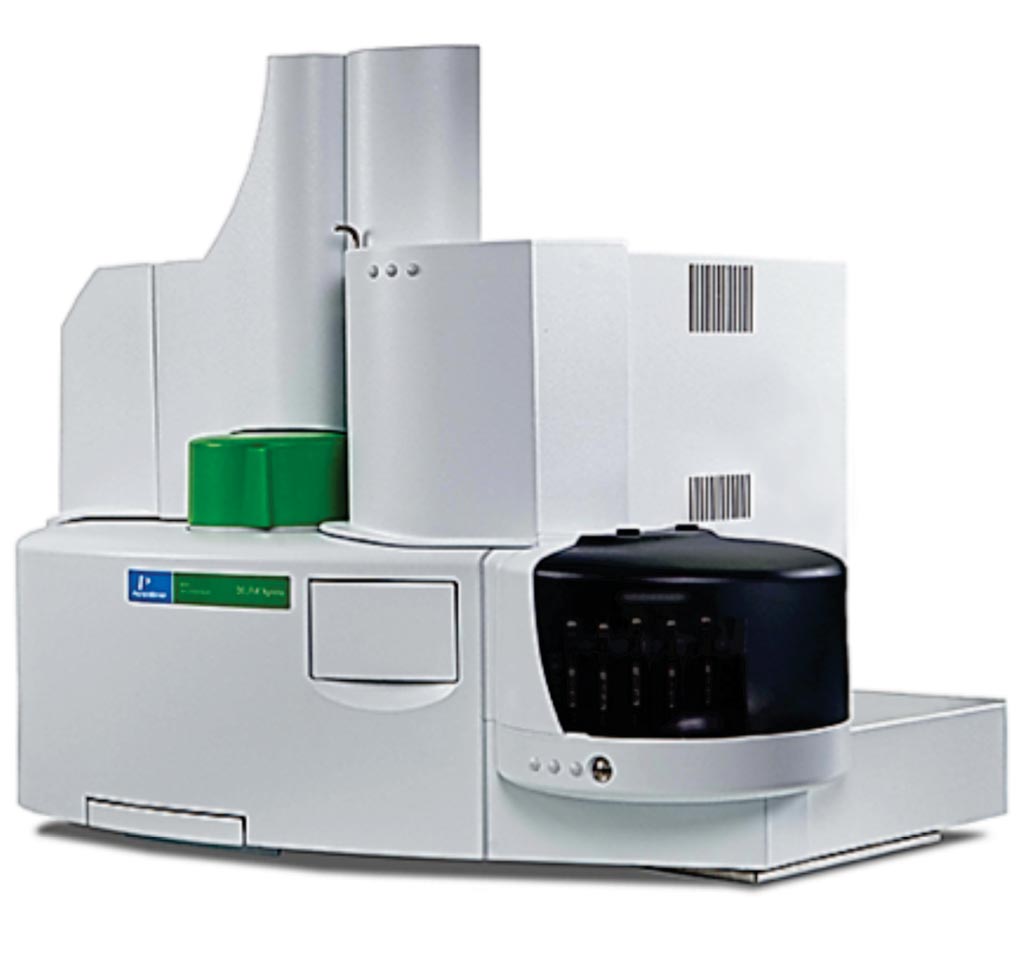Serum Biomarkers Improve Preeclampsia Screening
By LabMedica International staff writers
Posted on 31 May 2018
Preeclampsia (PE), which complicates 2% to 3% of pregnancies, is a major cause of mortality and morbidity for the mother and perinatal death and impairment for the baby.Posted on 31 May 2018
A screening method for predicting preeclampsia based on the mother’s risk factors and biomarker measurements outperforms a standard method based only on maternal characteristics and medical history.

Image: The DELFIA Xpress immunoassay analyzer for prenatal screening (Photo courtesy of PerkinElmer).
Scientists at King's College Hospital (London, UK) and their colleagues carried out a prospective multicenter study screening program for preeclampsia (SPREE) in seven National Health Service maternity hospitals in England, of women recruited between April and December 2016. The study involved 16,747 women between 11 and 13 weeks’ gestation who were assessed. The new screening method being evaluated in SPREE included not only maternal characteristics but also measurement of different combinations of mean arterial pressure (MAP), uterine artery pulsatility index (UtA-PI), serum placental growth factor (PlGF), and serum pregnancy-associated plasma protein-A (PAPP-A).
Maternal serum concentrations of PAPP‐A and PlGF were measured using one of two automated devices: DELFIA Xpress analyzer or the BRAHMS KRYPTOR analyzer. In all, 2.8% of participants developed preeclampsia; just 0.8% developed preterm preeclampsia, defined as requiring delivery before 37 weeks. The standard recommended method screened positive for 30.4% and 40.8% of all preeclampsia and preterm preeclampsia cases, respectively. In contrast, the new method combining maternal characteristics, MAP, and PAPP-A screened positive for 42.5% of all preeclampsia cases. Including PlGF and UtA-PI screened positive for 82.4% of all preterm preeclampsia cases.
The authors concluded that the performance of screening is substantially improved by a method combining maternal factors with biomarkers. Liona Poon, MD, a clinical senior lecturer and co-author of the study, said, “The SPREE study has provided definitive proof to support risk-based screening for preterm-preeclampsia using various biomarkers. It is now time to revise the professional guidelines and to move away from using a checklist-based method for screening.” The study was published originally published online on March 14, 2018, in the journal Ultrasound in Obstetrics Gynecology.
Related Links:
King's College Hospital














